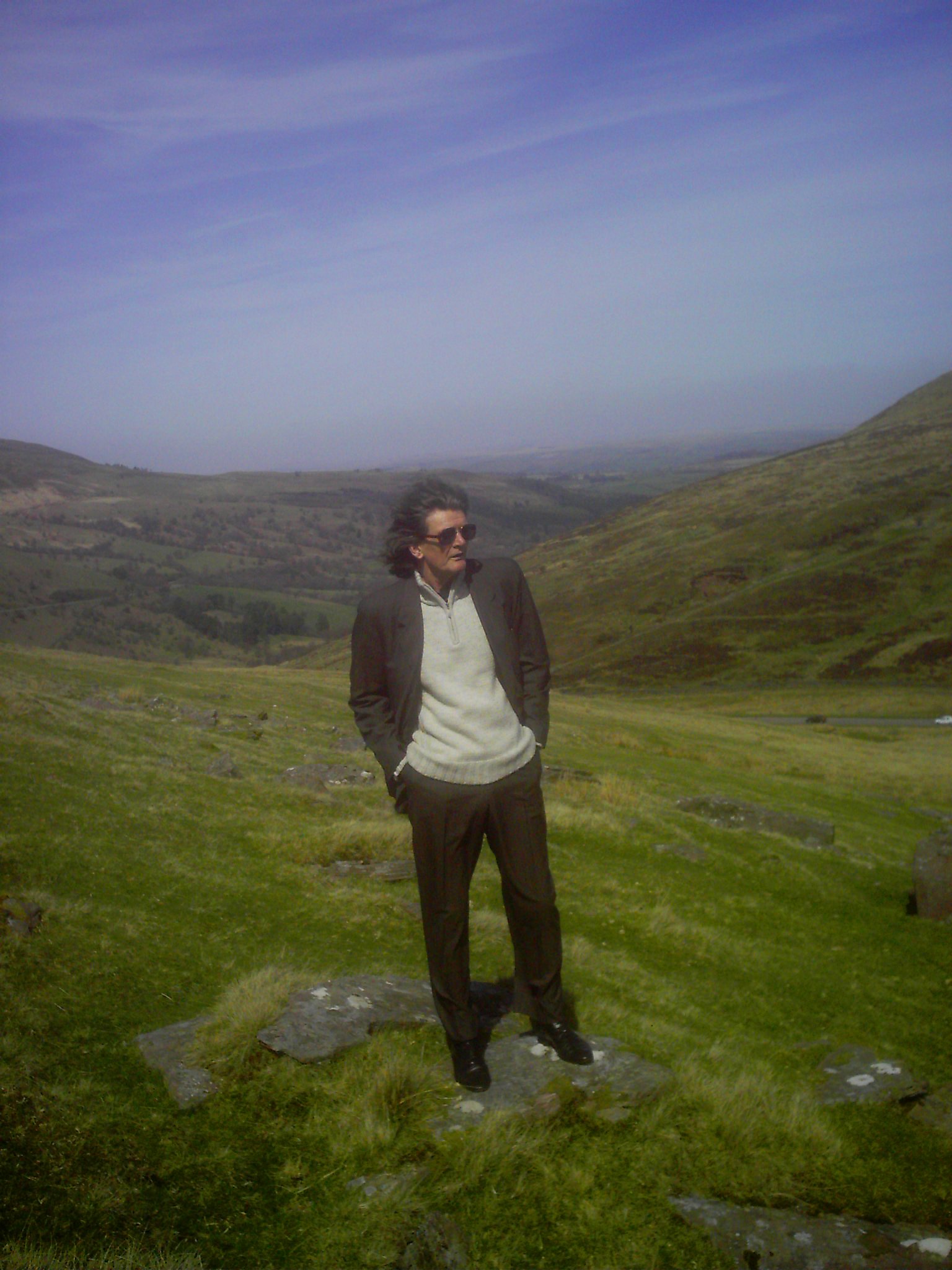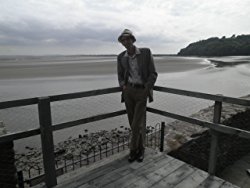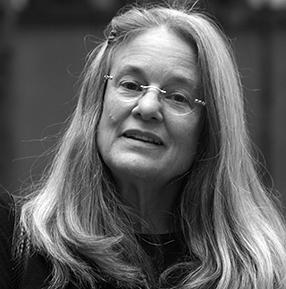
Troubled Water: Quietism in the Age of Performance By Norman Ball
(previously appeared in Trinacria, Fall 2014 in abridged form)
In Jared Carter’s latest collection of poetry The Darkened Rooms of Summer, the poem ‘Picking Stone’ is prefaced with the following passage from Emerson’s ‘Self-Reliance’:
“Speak your latent conviction, and it shall be the universal sense; for the inmost in due time becomes the outmost…we recognize our own rejected thoughts: they come back to us with a certain alienated majesty.”
Carter’s poetry conducts the latent convictions of the earth with unwavering fealty. Latent conviction suggests oblique paradox as does a room darkened by summer (also, the “dark shining” in ‘Scryer’ and the “harsh glare billowing darkness” in ‘The Shriving’). The grand, ineluctable cycles that move across the earth, and in equal measure through Carter’s poetry, extinguish their ends in their beginnings. Everywhere, light appears out of the darkness, or does one interpenetrate the other? Both. Stones are regurgitated to the surface like bundled mysteries. Were they there last planting season? Yes and no. Each encroaches upon, or drains from, the other as though through a great quantum sieve. One well imagines how fevered entrances and sweeping bows—all that performative mumbo-jumbo—would overwhelm what arrives to Carter’s still eye as a,“…broken heave of light and dark” (from ‘Phoenix’). Animated readings seize the eyeballs in the room yet banish the clearing. Through it all, the world forever adulterates and falls, mostly onto the shoulders of those who labor, in brief intervals, atop its primordial cycle.
Carter is a contemplative poet, yes. But in the spirit of Wordworth’s wise passiveness (there are powers/Which of themselves our minds impress/That we can feed this mind of ours,/In wise passiveness – Expostulation and Reply ll.21-24). This contemplative state is metaphorically expressed in ‘Mississinewa Reservoir at Winter Pool’. Here, the townspeople, ‘as though/having risen from a deep sleep/and come at last to a place/no longer having anything in it/except themselves.’
Quietism has fallen on loud, hard times. No one wants to take a silent bullet and invoke the clearing. Every day across America, poetry jumpstarts a bright new career in readings. Ill-suited ovations are the rage. Bowling night hardly stands a chance. In ‘The Oddfellows’ Waiting Room at Glencove Cemetery’, Carter begs to differ. A resolute listener, he continues to hold the thin, quiet line: ‘There must always be a place like this/where the dimensions collapse inwardly/ like a telescope you slip into your pocket.’ This is a beautiful image echoing again the Emerson quote; a telescope, tasked with mapping the outer reaches of the universe, collapsing into and inward, to a place where the poet stands waiting.
A heretical notion from the earliest times, quietism was formalized as such by Pope Innocent XI in 1687. Thomas Merton referred to it as an inert ‘spiritual vacuum’. The Protestant work ethic was equally hostile to a movement that rejected faith’s role as a catalyst for striving, wrestling and capital formation. The fundamental objection was that a faith that lacked vigor and purpose in the world risked falling into listlessness and solipsism. Soon enough, God’s voice would be shouted down by the clatter of railroads and later the ubiquitous presence of handheld devices.
There’s even less escaping the world today. Poems arrive hyperlinked to position papers. Recently, poetry critic and identity politician Ron Silliman accused quietism (or as poetasters like to call it, The School of Quietude) of a sly tactical reticence aimed at “denial of self-identification” and a refusal to be named. State your business or lay down your pen. Resisting industrial barcodes is, for the poetry confab, a first-order sin of omission. Poets are expected today to ‘splain themselves on the way to a good internecine squabble. Wearing their schools on their sleeves, they hoist grievances with a gusto that would make Robert Frost’s politicians blanch.
Well offstage, heads down and dimly lit, Carter’s people are forever lifting bricks and stones, digging up roots, exhuming the dead, but not with the isolating despair of Sisyphus. Here is a passage from ‘Ginseng’:
But all of them together— hunters,
thieves, those who keep the old ways—
pass it from hand to hand along
a chain of those who know exactly
where it is going, what it is worth—
The continental malaise of self-absorption has never reached Mississinewa County. Carter’s people accept their sublimated roles as momentary caretakers of the land—from prior hands, into future hands. To paraphrase Frost, life is notable mostly for going on, albeit with a flitting cast of characters, which is another way of saying time has a way of standing still:
Nothing done well ever ends,
she said, touching my hand, not even land
built up one act at a time, so that all
that went before, and after, still waits
there. –from ‘Poem Written on a Line from the Walam Olum’
We lift stones at our appointed times, then drop them for the earth to reclaim, swallow up, to be expunged anew, rediscovered and lifted once again (‘the inmost in due time becomes the outmost’). This human bucket brigade treads a cosmic circle that may well harbor a far-off, though ultimately inhuman, coherence. Coleridge’s tail-eating serpent meets Eliot’s still-point in ‘Mourning Dove’ where, “all of their singing is circular, and comes back to the same stillness.” In ‘The Undertaker’, we find a similar acquiescence to a cycle larger than one generation’s labors:
Each man slowly recognized, like a combination of lost numbers,
that men younger than themselves had labored here,
grown old, and were gone, who had lifted this same earth,
who had put in what they now took out
As for this moment, for you and for me, the mind is a stone to be rolled away from the entrance of the soul. Only then can man and earth enjoy unmediated communion. The ubiquitous arrowheads, stones with a fashioned vengeance, are scattered about the landscape like long-discarded arguments “dropped from an empty sky”. At times even the dead must be lifted in order to deliver their stillness to higher ground. The new reservoir promises to round all edges. Who will save the dead? Few congregants are up to the task, as the undertaker soon learns:
Fell overcome with heat, one did, the first day;
another struck by the sun; two more threw down their tools
and walked away. The few who stayed till the job was done
rode together in the back of Sefe’s pickup each quitting time
to a tavern on the highway”—from ‘The Undertaker’
What happens when self-negating labor is abandoned for the seductive rush of slogans, movements, grand causes and petty, indulgent feuds, in short the usual “bed of fabrications” (from ‘Shaking the Peonies’)? In ‘Phoenix’, we find two soldiers in borrowed Napoleonic uniforms, trapped in a generational family feud not of their making, in a Shawnee war not of their bidding. Adding to the worldly layers of confusion and “alienated majesty”, they find themselves comrades in the same war. Seeking to resolve these bewildering allegiances, they end up fighting one another to the death. In perhaps the most comprehensively emblematic image in the collection (we have the water, the rocks, the rising darkness and the failing light), the two men venture down to the hollow with the General’s consent where a “dark presence/rose up— a basin of troubled water, seething/and boiling, surging over heaps of stones/catching the last light through the trees”.
In ‘Picking Stone’, these men seem to appear again, this time as boys, “still in baseball uniforms from a game at the Legion” Later they, “pry with an iron bar against a great gray rock. They will not quit, they begin to roar as they bear down on it.”
Those closest to the earth do not bear uniforms well; or else the organizing principle becomes, “…so smudged you can’t tell what army” they’re in (from ‘Covered Bridge’). Uniforms are regimenting colors that march us away from ourselves. The uniform du jour in poetry these days is the performance poet. In his struggle to be heard, this thoroughly modern bard finds his public voice only to lose his vocation. After all, his job is not to linger, but to vacate the clearing his contemplation ushers through. The limelight eludes the proper poet by design.
Carter’s quietude is a conscious and sustained act, hardly a feeble acquiescence. He resists polluting the stillness with gratuitous detail, resigning himself with poetic fatalism to Keats’ negative capabilities, that ‘part of your mind that cannot hurry, that has never learned to decide’ (from ‘Mississinewa County Road’). Forbearance is the bright shadow that guides his pen.
The poet advertises himself only on the rarest occasions. In ‘At the Sign-Painters’, he extolls the Depression-era sign painters who stoically accept being observed at their labors. We sense the poet’s calling slowly forming in a boy’s mind. The words are prefigured, waiting to be filled out with whispers. But no speeches please. The universe entrusts its signs to the artisan who stands, in ready quietude, brush in-hand:
for the slow sweep and whisper
of the brush— liked seeing the ghost letters in pencil
gradually filling out, fresh and wet and gleaming, words
forming out of all that darkness, that huge disorder.
Contemplatives are particularly maddening because they eschew textual impartations from ‘higher authorities’, be they clergymen or self-appointed poetry critics. At least meditation involves meditating upon something: a prayer, a papal bull, the new Tom Cruise movie, a political manifesto. The arrangers of the world seek indoctrinated readers, not divine listeners. In the absence of doctrinaires, the sway of earthly power is loosened. French Quietist Jeanne Marie Guyon called it ‘loosening the stays’. Or as Carter says in ‘The Shriving’, ‘‘Things got in the way of what he saw and heard.”
I can detect no earthly authority to which Jared Carter’s poetry answers, except perhaps the earth itself. No sooner did I fancy him brushing against Shaker sensibilities in Indiana, his lifelong home and the locale for most of these poems, than I fell across ‘The Believers’ inscribed to “Shakertown at Pleasant Hill, Kentucky” with appearances no less, from Mother Ann Lee, the “endless chain” and the “narrow path”.
There is, in his poetry, Mother Ann Lee’s ‘retirement’ from opinion and argument into the unitive state of divine contemplation. When the nervous chatter stops, the clearing is allowed and the universe bursts forth. While nature can be chronicled for the labors it performs beneath our feet, we are here not to move mountains but to occasionally move our dead to higher ground. The mind feeds nothing. Carter’s poems cannot be willed into existence. Rather, they find him at his workbench, bristling with craft and emptied of polemic.
This is a sprawling collection, nearly 200 pages, that assembles poems from Carter’s first five books. I confess to approaching this task with great trepidation, knowing I could never do the volume anywhere near full justice. For instance, I have barely touched upon his metrical verse and his astonishingly unlabored villanelles. Instead, I have kept things to where my own fascinations seemed to gravitate, mostly, as it turns out, in the earlier work. That would be stones, arrowheads, borrowed uniforms, adulterated light and the elevated dead. I note his latest work favors compression. I prefer the unhurried eccentricity of his longer lines. In the main, this poetry moves across the earth with understated majesty. The ultimate testament to craft is the poet’s polite absence. I applaud Carter for leaving well enough alone.

NORMAN BALL (BA Political Science/Econ, Washington & Lee University; MBA, George Washington University) is a well-travelled Scots-American businessman, author and poet whose essays have appeared in Counterpunch, The Western Muslim and elsewhere. His new book “Between River and Rock: How I Resolved Television in Six Easy Payments” is available here. Two essay collections, “How Can We Make Your Power More Comfortable?” and “The Frantic Force” are spoken of here and here, respectively. His recent collection of poetry “Serpentrope” is here from White Violet Press. He can be reached at returntoone@hotmail.com.
JARED CARTER

After the Rain
After the rain, it’s time to walk the field
again, near where the river bends. Each year
I come to look for what this place will yield—
lost things still rising here.
The farmer’s plow turns over, without fail,
a crop of arrowheads, but where or why
they fall is hard to say. They seem, like hail,
dropped from an empty sky,
yet for an hour or two, after the rain
has washed away the dusty afterbirth
of their return, a few will show up plain
on the reopened earth.
Still, even these are hard to see—
at first they look like any other stone.
The trick to finding them is not to be
too sure about what’s known;
conviction’s liable to say straight off
this one’s a leaf, or that one’s merely clay,
and miss the point: after the rain, soft
furrows show one way
across the field, but what is hidden here
requires a different view—the glance of one
not looking straight ahead, who in the clear
light of the morning sun
simply keeps wandering across the rows,
letting his own perspective change.
After the rain, perhaps, something will show,
glittering and strange.
From After the Rain. First published in The Formalist.
Copyright © 1990, 1993 by Jared Carter.1
Jared Carter is an American poet. His first collection of poems, Work, for the Night Is Coming, won the Walt Whitman Award for 1980. His second poetry collection, After the Rain, received the Poets’ Prize for 1995. His third collection, Les Barricades Mystérieuses, was published in 1999. His latest book is Darkened-Rooms-of-Summer, published in 2014 by the University of Nebraska Press, with an intro by Ted Kooser.
Carter was a recipient of the Indiana Governor’s Arts Award for 1985. His fellowships include grants from the National Endowment for the Arts and the John Simon Guggenheim Memorial Foundation. Other honors have included the New Letters Literary Award for Poetry in 1992, judged by Philip Levine, and the 2002 Rainmaker Award for Poetry from Zone 3 magazine, judged by Marilyn Chin. He was invited to read his work at the Library of Congress on December 9, 2004.
A Midwesterner from Indiana, he studied at Yale and at Goddard, and worked briefly as a newspaper reporter. After military service and travel abroad, he made his home in Indianapolis, where he found employment in textbook publishing. He continues to serve as a consultant in that field.
In his main body of work, Carter offers “a local habitation and a name,” and invites the reader to explore a place called Mississinewa County, a world of small towns and family farms and hard-working people who live close to the land. The many characters in Carter’s poems—soldiers, Shakers, farmers, ex-football players, berry pickers, derelicts—strive to maintain their dignity and to uphold their traditions. It is the striving that connects them with the universal, and it is the author’s craftsmanship—a style one critic, H. L. Hix, has described as “diamond-hard clarity”—that makes them memorable. Mississinewa County first sprang to life in Carter’s initial book, Work, for the Night Is Coming. Critical response was immediate. “From beginning to end,” Dana Gioia wrote in his review of the book in Poetry, “this volume has the quiet passion of conviction, the voice of a poet who knows exactly what he wants to say and how to say it.” In McGill’s Literary Annual, Henry Taylor described Work, for the Night Is Coming as “one of the clearest and strongest first books to have appeared in recent decades.” Writing for Library Journal, Margaret Gibson called it “a true winner. It is simply splendid.”
Carter’s second collection, After the Rain, attracted similar notice. “Extraordinary,” Gioia reported in the Washington Post Book World, “a dark, haunting book in the tradition of Frost.” In New Letters Book Reviewer, Ted Kooser found After the Rain to be “a moving and masterful book, charming in the best sense of that word.” It offered “proof,” Robert Phillips wrote in the Houston Post, “that the art of poetry is alive and well in America.” Perhaps Robert McPhillips, writing in the Dictionary of Literary Biography Yearbook, 1994, best summed up the critical reaction to Carter’s second book: “Well crafted, philosophically profound, and eminently readable . . . the finest, most varied, and most rewarding volume of poetry published in 1993.”
Carter’s third collection, Les Barricades Mystérieuses, published by Cleveland State in 1999, takes the reader even farther into Mississinewa territory. At the same time it pays homage to one of Carter’s particular interests, the heritage of French exploration and discovery in the American heartland. Always an upholder of traditionalism in prosody and poetic practice, Carter turns, in this third book, to the extremely repetitive and very French poetic form of the villanelle. David Lee Garrison, writing in The Southern Indiana Review, found these villanelles to be “as simple and subtle as the change in light and shadow against a wall created by the shift of a log in the fire, the sound of a door swinging open in the wind, or peonies that reveal an old pathway through an orchard.”
“Carter’s is a poetry of a resolute middle distance, firmly of this world: between the dust under the earth and the dust of space there exists the place that the poem can illumine.”—Helen Vendler, New York Review of Books
.
editor@artvilla.com
robin@artvilla.com
www.facebook.com/PoetryLifeTimes
www.facebook.com/Artvilla.com












